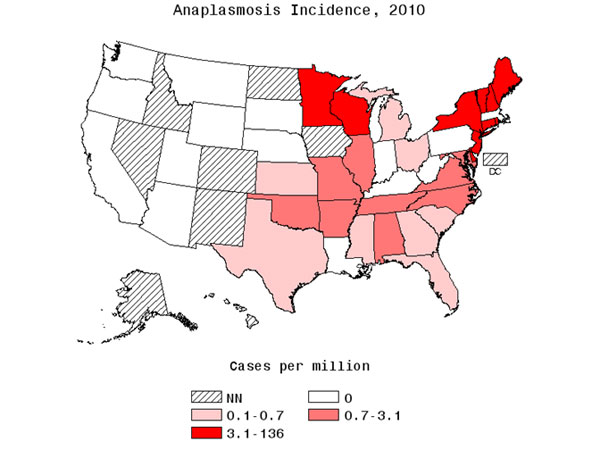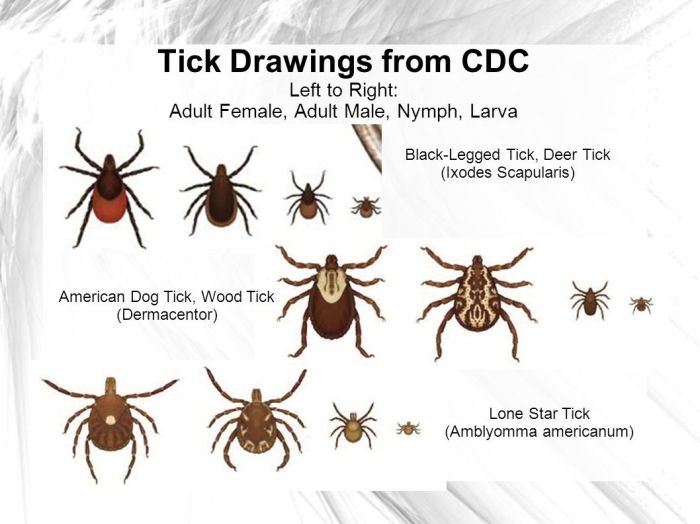Did you know that ticks carry a number of diseases beside Lyme disease? Two that in recent years have reared their ugly heads on Cape Ann are anaplasmosis and babesiosis. Both are transmitted by the black-legged tick (deer tick) in the northeastern U.S. and both have similar symptoms. When symptoms are exhibited, blood is drawn to determine which pathogen is present.
Recently I was bitten by a black-legged tick. The tick was only on my person for several hours. I brushed it off before realizing that it was a tick. The tick was completely flat and not in the least bit engorged. It left a slightly red raised bump that was itchy for a week or so. At my doctor’s office the staff insisted that because the tick was not engorged and because it was attached for less than twenty four hours I was safe from disease. This information was also reinforced by reading about Lyme disease on countless websites.
 Ticks of all sizes and at all stages of life can harbor diseases
Ticks of all sizes and at all stages of life can harbor diseases
That you cannot get sick from a tick attached for less than twenty four hours is 100 percent false. Several weeks ago I staggered home from a very busy day planting a client’s garden. I thought perhaps I had just overdone it and went straight to bed. The next day I could barely move. For the next two weeks I would make an effort to get to work but wind up back in bed a few short hours later. I at first thought it was the flu, but instead of running its course and getting better, things went from bad to worse until I ended up in the hospital with pneumonia. That’s one of the things with anaplasmosis, it also effects your respiratory system.
Kelly Ries, Gloucester’s public health nurse shares that less than five cases of anaplasmosis and babesiosis have been reported in Gloucester. Symptoms of anaplasmosis include fever, headache, muscle pain, malaise, chills, nausea, abdominal pain, cough, confusion, and loss of appetite, of which I had all.
I am writing to help create an awareness with our readers that Lyme disease is not the only pathogen carried by the black-legged tick. Each year, more and more cases of anaplasmosis and babesiosis are being diagnosed in the northeast. Nurse Kelly also reports that black-legged ticks are still active at this time of year and can continue to transmit disease even after the first snowfall of the season. If any of our readers have contracted anaplasmosis (which I sincerely hope not) please write and let us know your experience. Thank you so much.
Doxycycline is the first line of defense for adults and children of all ages and should be initiated immediately whenever anaplasmosis is suspected however, the CDC website provides a warning regarding prophylaxis (preventative treatment): Antibiotic treatment following a tick bite is not recommended as a means to prevent anaplasmosis. There is no evidence this practice is effective, and this may simply delay onset of disease. Instead, persons who experience a tick bite should be alert for symptoms suggestive of tickborne illness and consult a physician if fever, rash, or other symptoms of concern develop.
For more information about about anaplasmosis see the Centers for Disease Control and Prevention here.
As you can see from the map below, prior to 2010, there were zero cases of anaplasmosis reported in Massachusetts.

